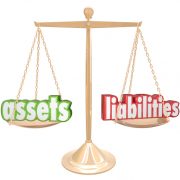Is a Self-Directed IRA the Path to Financial Freedom?
When it comes to retirement, people who invest in a Self-Directed IRA have the opportunity to take control of their financial future. They can choose how much they want to put toward their retirement and what types of investments they want to make. This type of IRA is different from other types because it allows investors to diversify their portfolios with assets like precious metals, real estate and even cryptocurrencies. However, there are certain rules that investors must follow when setting up an account with a Self-Directed IRA provider.
In this article, we’ll discuss why you should consider opening a self-directed account for your retirement savings and some steps you need to take first in order for your investment goals to be realized—and whether a Self-Directed IRA might be the right path to financial freedom.
Using a Self-Directed IRA for Financial Freedom: the Rules
First, let’s get one thing clear. A Self-Directed IRA is not a new type of retirement account. It’s an investment account that allows you to invest in a variety of assets. Using a Self-Directed IRA, you can invest your retirement savings in alternative investments like real estate, private placements, promissory notes, precious metals, and limited partnerships.
The IRS permits you to make alternative investments with your IRAs as long as they’re disqualified assets like life insurance contracts or collectibles like artwork or antiques. In fact, the list of potential assets is limited to what you can’t invest in, rather than to what you can invest in.
You also have to avoid prohibited transactions with an IRA, which means avoiding transactions with “disqualified persons.” Those can include people you know, such as a spouse or a relative.
How a Self-Directed IRA Might Help Your Portfolio
A Self-Directed IRA allows you to use your retirement funds in nontraditional ways that can bolster your portfolio over many years. In the past, using a traditional approach, your only option might have been to invest in stocks and bonds. Now, however, there are many other options available to you including common retirement assets like real estate, and precious metals.
Investment options within a Self-Directed IRA can include:
- Equity investments like stocks and bonds
- Debt instruments such as CDs or commercial paper
- Real estate property such as land or an apartment building
One way to view a Self-Directed IRA is as an investment vehicle that allows you to choose what to invest in. A Self-Directed IRA allows you the freedom to invest your retirement savings in virtually any type of investment, except those prohibited by the IRS. If you have been looking for an opportunity to add alternative investments into your portfolio but have been deterred by high minimums or complexity of setting up these types of accounts on your own, a Self-Directed IRA could be a great way to achieve financial freedom when hitting retirement age.
Diversification: A Chief Advantage of the Self-Directed IRA
A Self-Directed IRA can help investors diversify their portfolios and potentially increase returns while limiting downside risk by selecting only those investments that make sense based on their goals, risk tolerance, and financial situation. Investors should note that there are some restrictions related to how much one can contribute per year. But even so, there are options like using non-recourse loans with a Self-Directed IRA which can give you more flexibility.
Is a Self-Directed IRA your path to financial freedom? Here’s the beautiful part: with a Self-Directed IRA, you get to choose. For more information about the Self-Directed IRA, reach out to us here at American IRA by dialing our number: 866-7500-IRA.
Want to know more about the freedoms of owning a Self-Directed IRA? Visit: Self-Directed IRAs: The Freedom to Invest in Alternatives (americanira.com)







